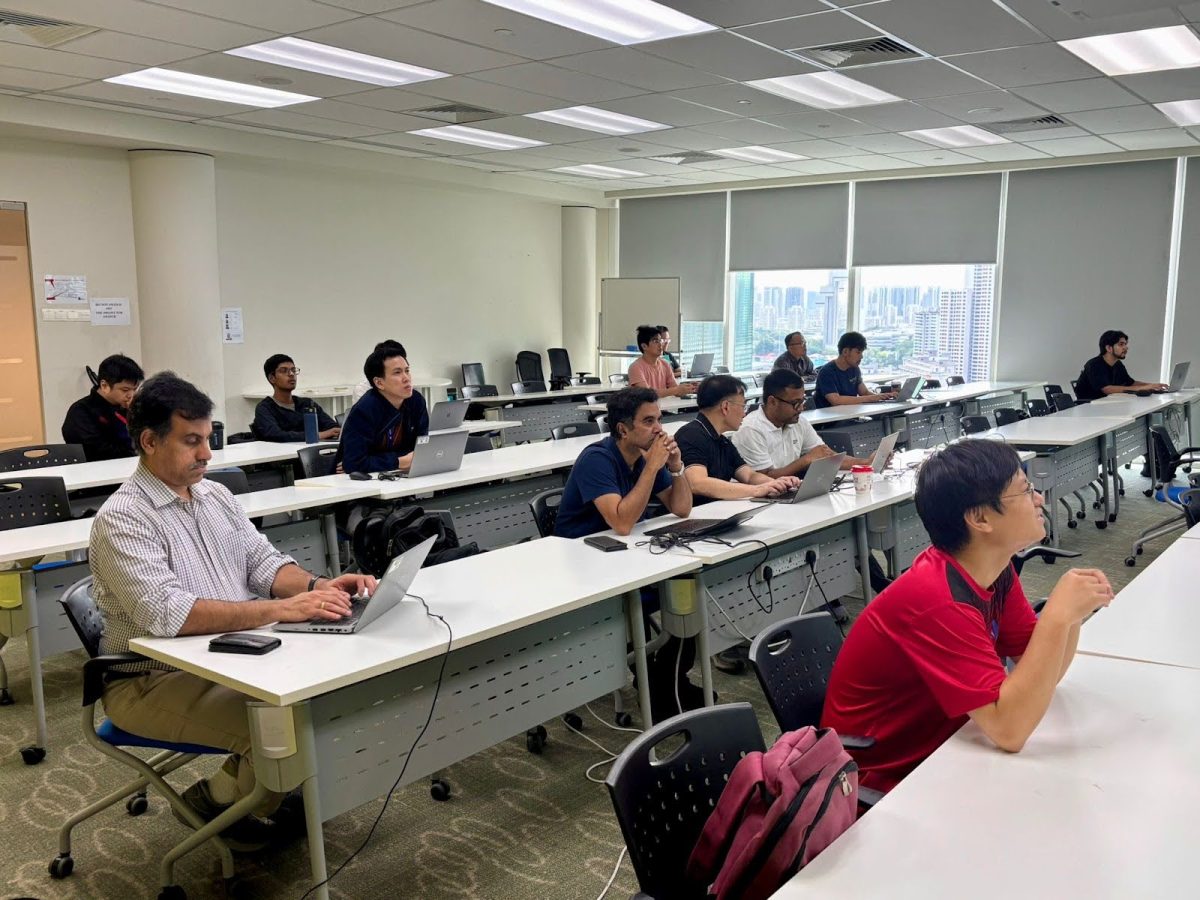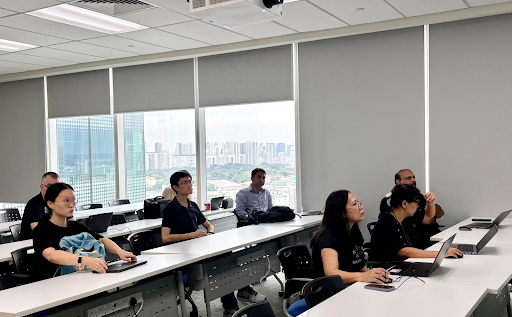Pulling the curtains on climate change
By Mitchell Lim
Asian countries today are at the mercy of extreme weather events spurred by climate change. Typhoon Hagibis in 2019, for example, is the largest to hit Japan since records began, and monsoon rains submerged thousands of homes in Malaysia at the start of 2022.
From Pakistan to the Philippines, climate change has altered the conditions in which all weather occurs: the oceans and air are warmer, the atmosphere is more vaporous, and sea levels are higher. These result in stronger storms and typhoons, as well as more death and destruction in floods and landslides. A recent study found that climate change made Typhoon Hagibis’ extreme rainfall 67 percent more likely, and is responsible for US$4 billion worth of the damage left behind.
As world leaders set goals for mitigating climate change, scientists are helping them prepare for the disasters it will cause. In developing countries, accurate early-warning systems are proving key to improving evacuation systems and limiting casualties. The Global Commission on Adaptation estimates that every dollar spent on such systems could prevent up to twenty dollars of losses annually—underscoring the tangible benefits of coordinated early action.
At RIKEN, Japan’s largest research institution, weather and climate scientists are making rain predictions for the Tokyo metropolitan area using Fugaku, previously the world’s fastest supercomputer. The key to their technique is big data assimilation: harnessing computational prowess to synchronize data between large-scale computer simulations and observational data.
“For the first time, we have developed a highly accurate and precise model that is capable of predicting weather conditions of up to 30 minutes into the future, updated every 30 seconds, with a resolution of 500 meters,” said Dr Takemasa Miyoshi, who leads the Data Assimilation Research Team at the RIKEN Centre for Computational Science, in an interview with Supercomputing Asia.
Innovations like these are set to improve the preparedness and response systems for natural disasters. And as climate change continues amidst rapid urbanization and other issues like land sinking, high performance computing (HPC) is empowering researchers in countries like Japan and Singapore to find ways to navigate the climate crisis in the decades to come.
THE CHALLENGE OF CLOUD SUPERCOMPUTING
“The threat of extreme weather is increasing due to climate change, and it is important to be prepared well,” explained Miyoshi. To do this, scientists must develop climate models and weather prediction systems that enhance preparedness with respect to each area’s infrastructure, geography and unique weather warning systems.
But this is much easier said than done. It takes a mind-boggling plethora of factors to model the climate, which requires observing the atmosphere, land and oceans with satellites, aircraft and ships.
In fact, modeling clouds is already quite the challenge. At any given moment, more than half of our planet is covered by clouds, which both reflect solar energy to space and absorb heat from the surface of the Earth—influencing weather in different and sometimes contradictory ways.
For instance, surface temperatures can be affected by the height of overhead clouds, how wispy or puffy they are, and how well they reflect sunlight. To study what is going on up above, researchers may even have to probe the deep seas for clues, as ocean microbes have also been found to spit out biological particles that can seed clouds and shape weather patterns across the globe. As ocean temperatures rise and more greenhouse gasses make their way to the atmosphere, these patterns of cloud formation are changing, too.
Clouds play a crucial role in weather and climate, and so there is a lot riding on getting this one set of factors right—an inaccurate computational understanding of clouds leads to an inaccurate climate model and, in turn, inaccurate conclusions and ill-informed policies.
Clouds must also be considered on top of other factors, like oceans and urban infrastructure. Accounting for the chaos and complexity of all the elements in flux within our planet’s systems, today’s climate models draw so much brute computing strength that whole supercomputers are designed and built to serve this purpose.
“HPC is essential to perform the trillions of calculations required to predict the impact of changing greenhouse gas levels on the climate system, which include sea level rise, rainfall and temperature changes,” said Dale Barker, director of the Centre for Climate Research Singapore (CCRS), in an interview with Supercomputing Asia.
TAKING THE LONG VIEW
Apart from monitoring and predicting extreme weather events, supercomputers are also being deployed to address disasters that unravel gradually.
Land sinking, for example, is a particularly pressing problem for Singapore, intensified by the rapid construction of urban infrastructure. According to research led by Nanyang Technological University, Southeast Asia’s coastal cities are sinking the fastest, which greatly heightens the risk of coastal flooding when harsh weather strikes. With about a third of its land surface less than five meters above sea level, Singapore is highly vulnerable if no appropriate countermeasures are taken.
Collaborating with the National Supercomputing Center (NSCC) Singapore, scientists at CCRS are tackling this looming hazard by formulating simulations to help understand the complex underlying processes that shape weather and climate in the region.“A better understanding of how these processes will change under future climate scenarios will lead to more reliable climate change projections, which can in turn be used to develop more effective policies for climate change adaptation,” Hugh Zhang, deputy director of the Department of Weather Research at CCRS, said in an interview with Supercomputing Asia. Zhang also pointed out that because Southeast Asia is considered the “engine room” of the global climate system, this research has the potential to impact policies around the globe.
As part of V3, Singapore’s third Climate Change Study, the simulations currently running on NSCC’s ASPIRE 2A are expected to culminate in a next-generation climate model tailored for the region by September 2023. Capable of zeroing in on every square of land or sea spanning eight kilometers regionally and two kilometers within Singapore, the model can produce more detailed climate change projections compared to global models, which provide a resolution of about 150 kilometers, for vital information like projected temperatures, rainfall levels and wind speeds.
On the hardware front, the National Environment Agency’s Meteorological Service Singapore (MSS) has recently commissioned a new supercomputer named “Utama,” built using Hewlett Packard Enterprise’s Cray Ex system. Housed in the CCRS building, the Utama has 98 compute nodes and a peak performance of 400 teraFLOPS—computational power that is set to be used to improve weather forecasts and turbocharge climate simulations for Singapore. The new Utama machine will enable upgrades to MSS’ ‘SINGV’ numerical weather prediction system. This includes the demonstration of the new ‘uSINGV’ capability, designed to capture Singapore’s unique urban environment, as well as an upgraded ‘cSINGV’ configuration that captures the interactions between land, atmosphere and the ocean.
The first two installments of Singapore’s Climate Change Study had identified the long-term effects of climate change on the republic, encompassing critical areas such as water resources, biodiversity, public health, infrastructure and food security. With results from the third installment within close sight, supercomputing power—and the research it makes possible—can help shape government policy. It can help identify the appropriate timeframe to implement adaptation measures that could safeguard cities in the region against a warmer climate, rising sea levels and stronger and more frequent storms.
Some measures have already been undertaken as a result of these studies. For instance, the Public Utilities Board, Singapore’s national water agency, has rolled out nature-based, engineering solutions to protect the nation’s coastlines from rising sea levels, such as putting up mangroves in key areas at risk of high impact waves.
THE ROAD AHEAD
Accurately gauging the risks posed by climate change at a local level is among the key goals of climate modeling. Nevertheless, some uncertainties remain. For instance, researchers are working to zero in on disastrous tipping points, or drastic changes in the climate like the loss of Arctic sea ice or the thawing of carbon-rich permafrost. Once reached, these points can produce climate-destabilizing outcomes that go on to trigger other cascading events, predicted to be irreversible even if global temperatures drop.
Zhang explained that supercomputers will continue to play a key role in advancing weather and climate science. And as capabilities in climate modeling continue to develop, researchers remain hopeful. “Data-assimilation techniques and artificial- intelligence applications could take advantage of advanced hardware, paving the way for future climate research that combines both process and data-driven approaches,” said Miyoshi.





